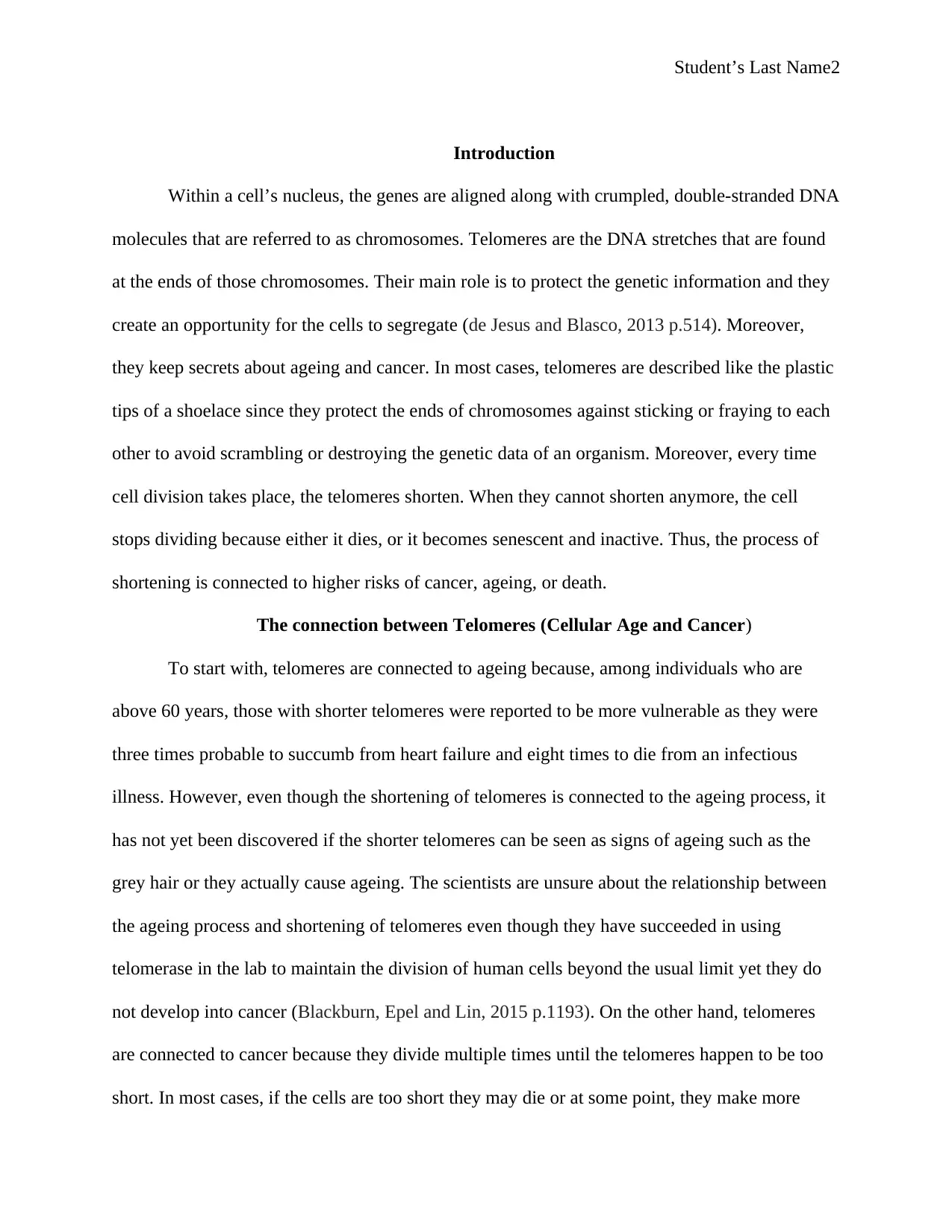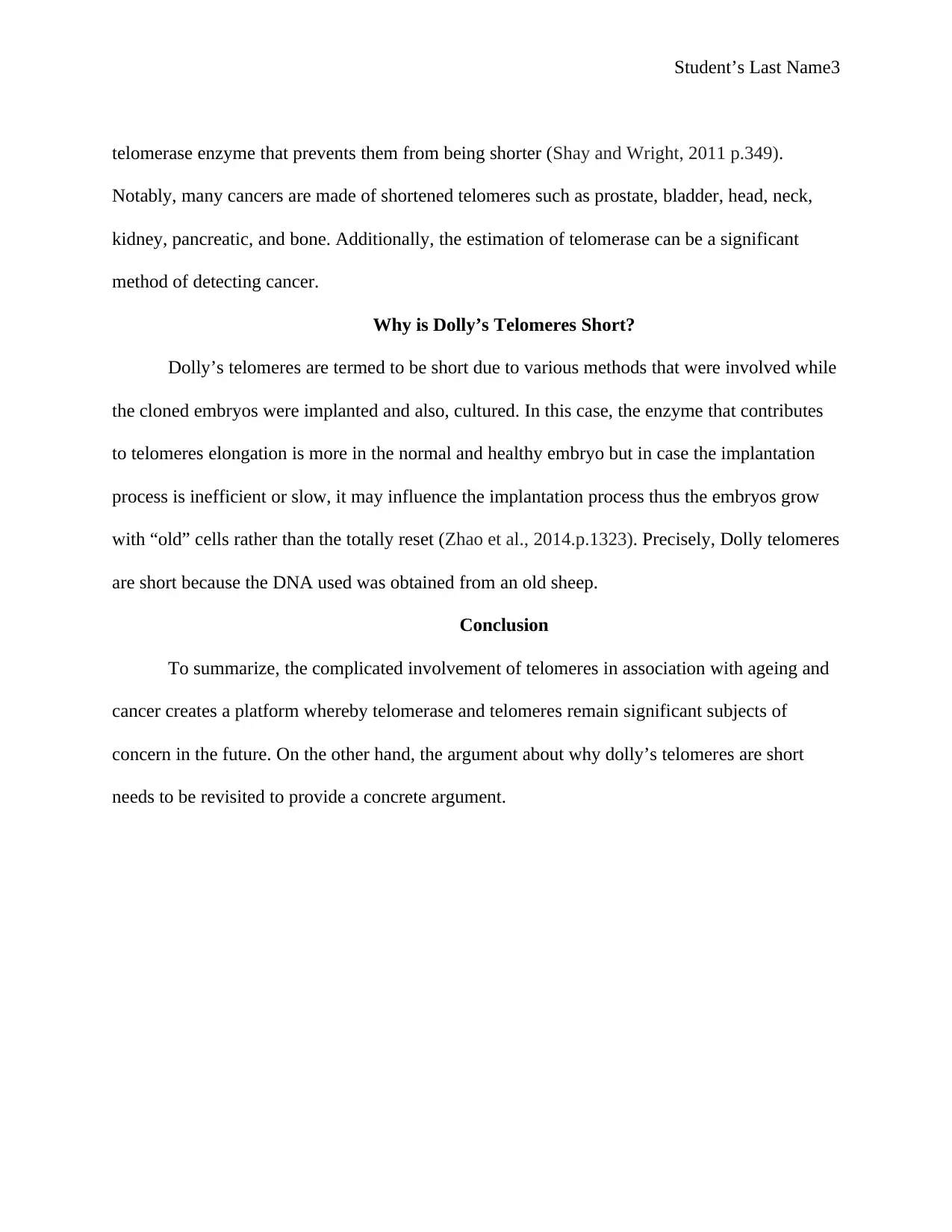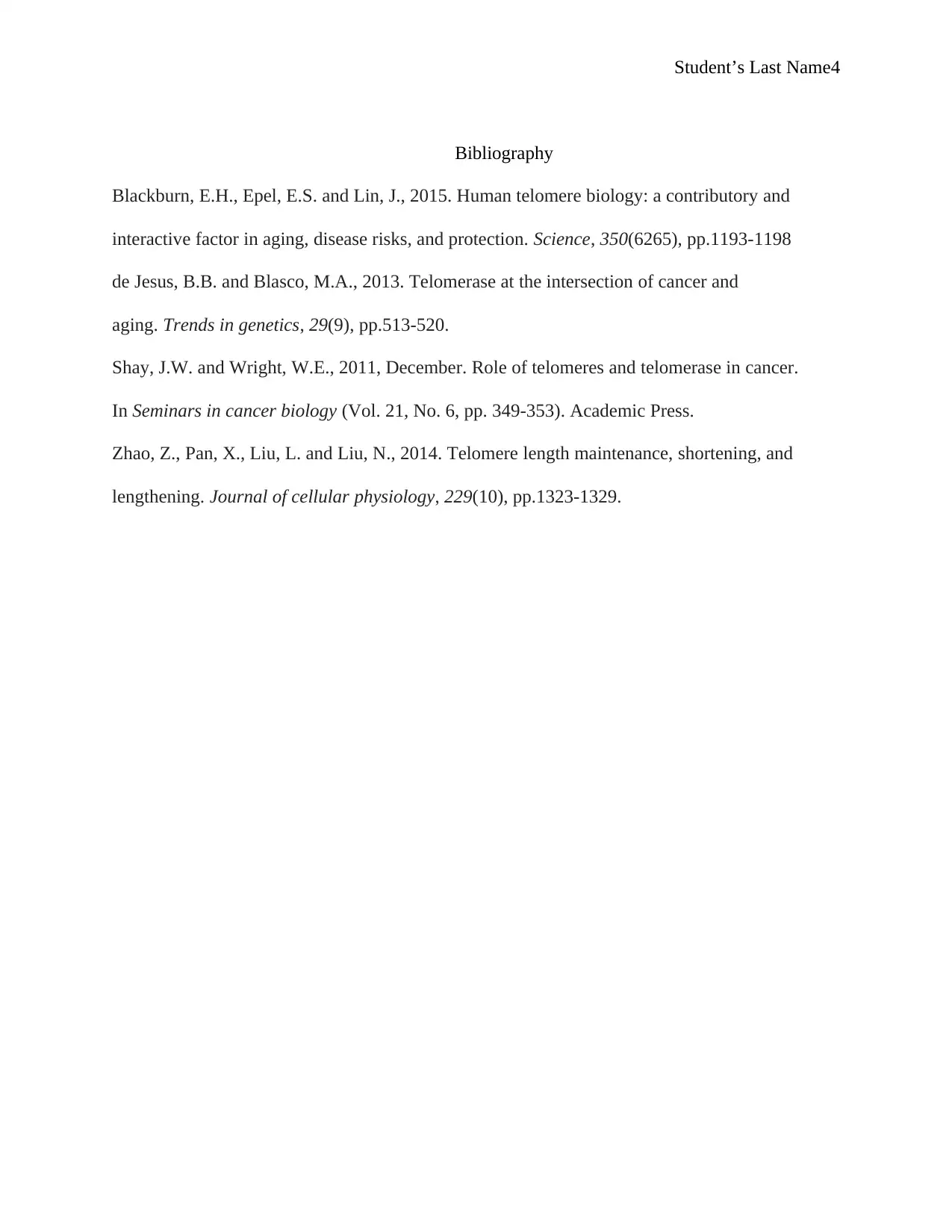Molecular Biology Report: Telomeres, Cellular Age, Cancer, and Dolly
VerifiedAdded on 2023/03/30
|4
|637
|396
Report
AI Summary
This report delves into the intricate relationship between telomeres, cellular aging, and cancer. Telomeres, the protective caps at the ends of chromosomes, play a crucial role in safeguarding genetic information and are linked to both aging and cancer development. The report highlights how telomeres shorten with each cell division, and how this shortening is associated with increased risks of age-related diseases and cancer. It further explores the connection between telomeres and cancer, explaining how cells with shortened telomeres may either die or produce more telomerase. The report also investigates the case of Dolly the sheep, the first mammal cloned from an adult cell, whose telomeres were shorter than expected, and the factors that contributed to this phenomenon are discussed. The report concludes by emphasizing the significance of telomeres and telomerase as key subjects in future research related to aging and cancer.
1 out of 4








![[object Object]](/_next/static/media/star-bottom.7253800d.svg)